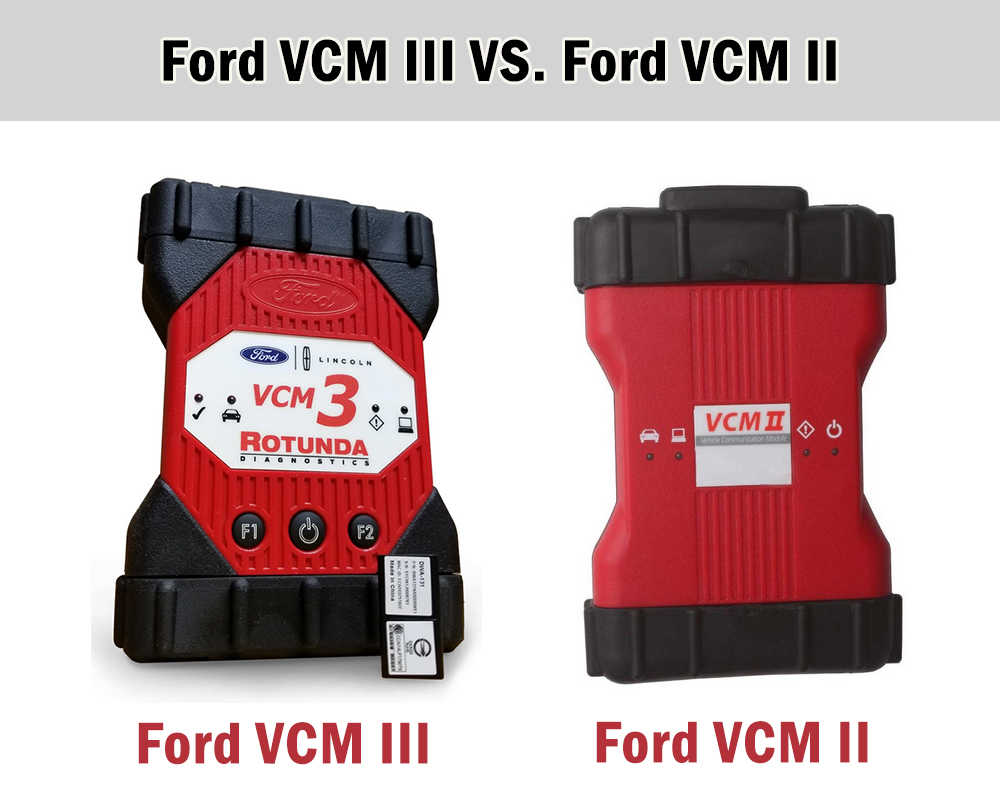
The Ford VCM II and Ford VCM III are car diagnostic tools used for vehicle communication and diagnostics in Ford vehicles. These tools have key features and capabilities that make them essential for automotive professionals and enthusiasts. Let’s take a closer look at each of these devices and compare their functionalities.
The Ford VCM II is the earlier version of the Vehicle Communication Module. It offers various diagnostic functions, including self-tests, data logging for different vehicle systems, module programming, and PATS functions. The VCM II is compatible with Ford’s Integrated Diagnostic Software (IDS) and works well with most Ford vehicles. It is a reliable tool for diagnosing and troubleshooting issues in Ford vehicles.
On the other hand, the Ford VCM III is the latest version and replaces the VCM II. Although it currently offers no additional features over the VCM II for existing vehicle models, it is expected to support future vehicle models that the VCM II will not, especially electric cars. This makes it a more future-proof option for those who work with the latest Ford models or anticipate working with electric vehicles.
One notable feature of the VCM III is its wireless communication capability (802.11). This allows for a more flexible and remote connection to a laptop for diagnostics. With wireless connectivity, automotive professionals can conveniently diagnose and program Ford vehicles from a distance, enhancing efficiency and convenience.
The VCM III is designed to work with the latest Ford diagnostic software like IDS, FDRS, and FJDS, providing comprehensive diagnostic and programming capabilities. This compatibility ensures that users have access to the most up-to-date software tools and features for diagnosing and repairing Ford vehicles.
Additionally, the VCM III includes a Customer Flight Recording (CFR) functionality, which can be used with an optional sling Cable and industry-standard J1962 Data Link Connector (DLC) and USB cable. This feature allows for in-depth analysis and recording of vehicle data, making it easier to identify and resolve complex issues.
The device also has four LED indicators and signaling devices for continuous visual and audible operational status. This ensures that users can easily monitor the device’s performance and status during diagnostics and programming processes.
In conclusion, while the VCM III is the newer model and is expected to support future Ford vehicle models, especially electric ones, both the VCM II and VCM III currently offer similar diagnostic capabilities for existing models. However, the VCM III has the advantage of wireless communication and compatibility with the latest Ford diagnostic software. The choice between the two would depend on the specific needs of the user and whether they require support for future Ford vehicle models.
Leave a Reply